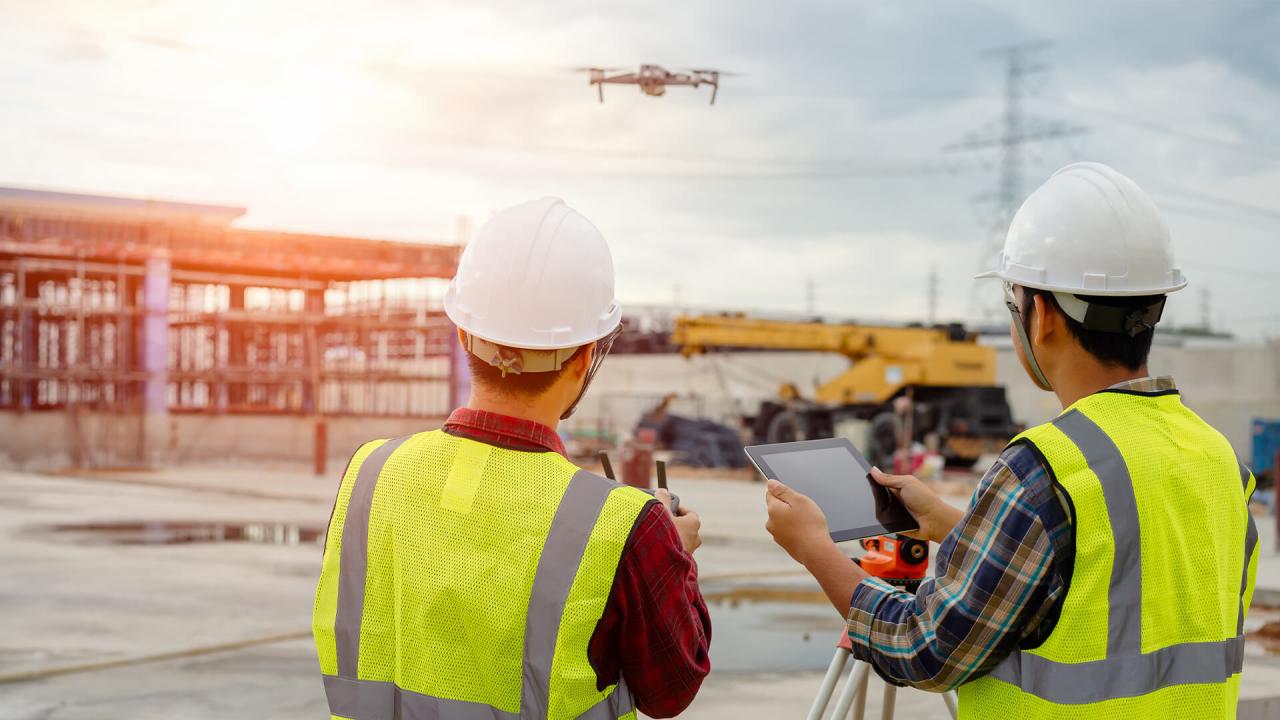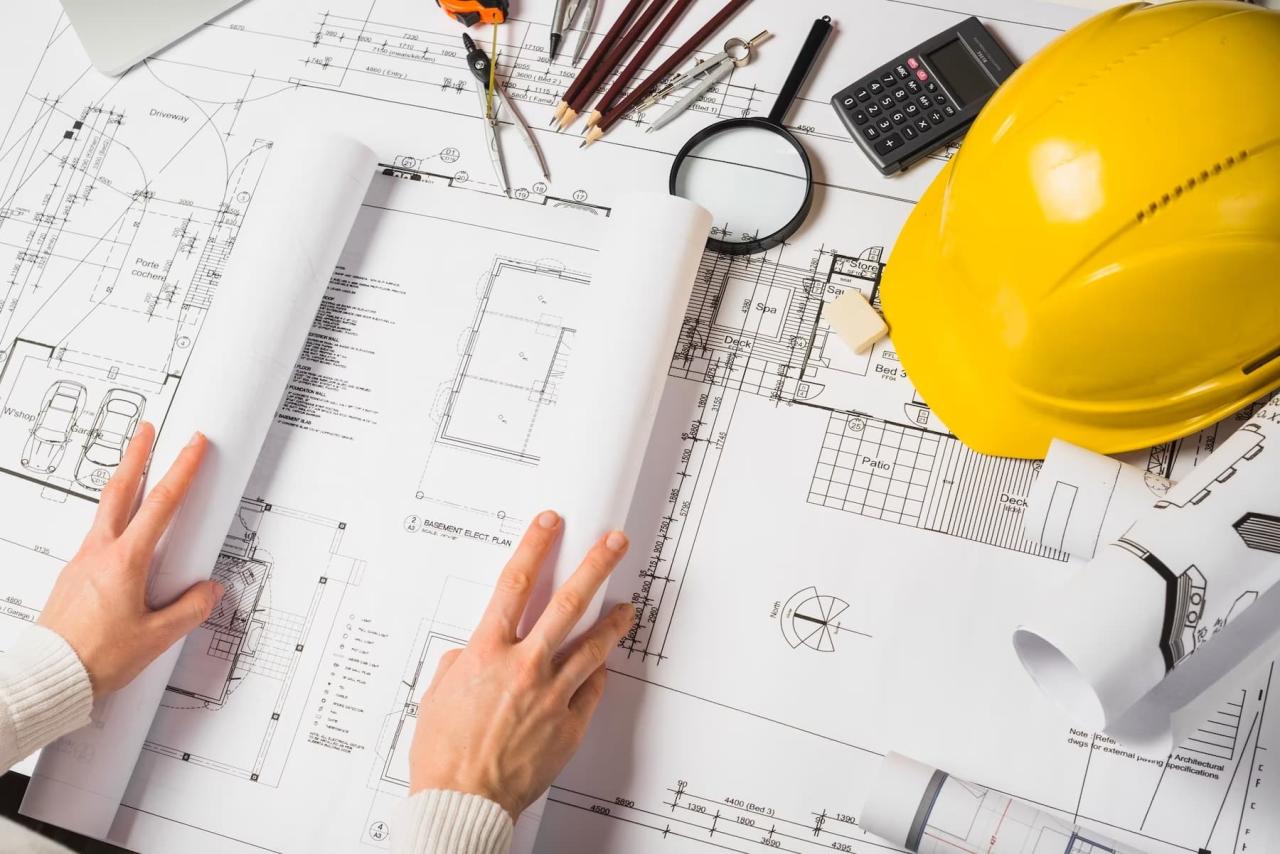Construction Technology Solutions: Building the Future
Construction technology solutions are revolutionizing the way we build, transforming the industry from its foundations. From design to construction, management, and maintenance, technology is weaving itself into every stage of […]

Construction technology solutions are revolutionizing the way we build, transforming the industry from its foundations. From design to construction, management, and maintenance, technology is weaving itself into every stage of the process, bringing efficiency, sustainability, and innovation to the forefront.
The construction industry is facing a multitude of challenges, including labor shortages, rising costs, and the need to build more sustainably. Construction technology solutions offer a powerful answer to these challenges, enabling us to build smarter, faster, and more efficiently. This exploration delves into the exciting world of construction technology, examining its key solutions, benefits, and the future it holds.
The Evolving Landscape of Construction Technology
The construction industry has always been at the forefront of innovation, embracing new technologies to improve efficiency, safety, and sustainability. From the invention of the wheelbarrow to the rise of Building Information Modeling (BIM), the history of construction technology is marked by groundbreaking advancements that have transformed the way we design, build, and manage infrastructure.
Historical Evolution of Construction Technology
The evolution of construction technology can be traced back to ancient civilizations, where ingenious techniques were employed to erect monumental structures. The pyramids of Egypt, the Great Wall of China, and the Roman aqueducts stand as testaments to the ingenuity and resourcefulness of early builders. These structures showcased the use of sophisticated tools, materials, and construction methods that laid the foundation for future innovations.
The Industrial Revolution ushered in a new era of construction technology, with the introduction of steam power, machinery, and standardized building materials. This period saw the development of cranes, excavators, and other heavy equipment that revolutionized construction processes. The advent of steel and concrete further expanded the possibilities of construction, enabling the creation of taller and more complex structures.
In the 20th century, construction technology witnessed a rapid acceleration, driven by advancements in computing power, automation, and digital modeling. The introduction of computers in the design and engineering process led to the development of CAD (Computer-Aided Design) software, which enabled architects and engineers to create detailed plans and drawings. The emergence of BIM (Building Information Modeling) in the late 20th century marked a significant milestone, allowing for a comprehensive digital representation of a building project, encompassing all aspects from design to construction and operation.
Robotics and Automation in Construction

The construction industry is embracing robotics and automation to enhance efficiency, safety, and productivity. These technologies are revolutionizing various aspects of construction, from material handling to complex tasks like bricklaying and welding.
Robotics and Automation in Construction Tasks
Robotics and automation are increasingly used in construction tasks, automating repetitive and dangerous jobs. These technologies can improve accuracy, speed, and safety on construction sites.
- Bricklaying: Robots are being deployed to lay bricks with precision and speed, significantly reducing labor costs and improving the quality of construction. For example, the SAM100 robot from Construction Robotics can lay up to 1,200 bricks per hour, compared to a human bricklayer who lays about 300-500 bricks per hour.
- Welding: Automated welding systems are used in various construction applications, such as steel fabrication and structural welding. These systems can weld with greater accuracy and consistency than human welders, resulting in higher quality welds and reduced defect rates.
- Demolition: Robotic demolition systems are being used to safely and efficiently demolish buildings and structures. These robots can handle hazardous materials and work in confined spaces, minimizing risks to human workers.
- Concrete Pouring: Robotic systems are being used to pour concrete with precision and speed, reducing labor costs and improving the quality of concrete structures. For example, the “Concrete Printing” technology allows robots to print concrete structures with complex designs and shapes.
Advantages of Robotics in Construction
The adoption of robotics in construction offers numerous benefits, including:
- Increased Productivity: Robots can work faster and more efficiently than human workers, completing tasks in a shorter timeframe and increasing overall productivity.
- Reduced Labor Costs: By automating tasks, robotics can reduce the need for manual labor, leading to lower labor costs and potentially lower project costs.
- Improved Safety: Robots can perform dangerous tasks, such as working at heights or handling hazardous materials, reducing the risk of accidents and injuries to human workers.
- Enhanced Accuracy and Quality: Robots can work with greater precision and consistency than human workers, resulting in higher quality construction and fewer defects.
Impact on the Construction Workforce
The increasing use of robotics in construction is likely to have a significant impact on the construction workforce. While robots can create new jobs in areas like robotics engineering and maintenance, they will also displace some traditional construction jobs. This shift will require workers to adapt and acquire new skills to remain competitive in the evolving construction industry.
“The construction industry is at a crossroads. We need to embrace new technologies, including robotics, to remain competitive and meet the demands of the future. However, we also need to ensure that workers are prepared for the changes that these technologies will bring.” – [Name of CEO or Expert]
Upskilling and Retraining for the Future, Construction technology solutions
To address the impact of robotics on the construction workforce, upskilling and retraining programs are crucial. These programs can help workers acquire the skills needed to work alongside robots and take on new roles in the evolving construction industry.
- Training in Robotics and Automation: Workers need to be trained in how to operate and maintain robotic systems, as well as how to work safely alongside them.
- Developing New Skills: Workers need to develop new skills in areas like data analysis, programming, and project management to take on roles in the digitalized construction industry.
- Collaboration and Innovation: Training programs should focus on fostering collaboration between human workers and robots, encouraging innovation and problem-solving in the construction sector.
The Future of Construction Technology
The construction industry is undergoing a rapid transformation, driven by advancements in technology. From AI and robotics to virtual reality and the Internet of Things, the future of construction promises a more efficient, sustainable, and innovative approach to building.
Impact of AI, Robotics, and VR
AI, robotics, and VR are poised to revolutionize the construction industry in the coming years. These technologies will automate tasks, improve safety, enhance productivity, and ultimately, lead to better-designed and more sustainable buildings.
The Role of AI in Construction
AI is already playing a significant role in construction, with applications ranging from project planning and scheduling to site monitoring and quality control. For example, AI-powered algorithms can analyze vast amounts of data to identify potential risks and delays, enabling contractors to make informed decisions and optimize resource allocation.
The Impact of Robotics on Construction
Robotics are increasingly being deployed in construction to perform repetitive and dangerous tasks, such as bricklaying, welding, and demolition. Robots can work tirelessly and with greater precision than humans, leading to improved efficiency and safety. The use of robotics in construction is expected to grow significantly in the future, particularly in areas where labor shortages and safety concerns are prevalent.
The Potential of VR in Construction
VR is transforming the way buildings are designed, built, and maintained. VR technology allows architects and engineers to create immersive virtual models of buildings, enabling them to visualize designs and identify potential problems before construction begins. VR can also be used for training construction workers, simulating real-world scenarios and improving safety.
Opportunities and Challenges
The future of construction technology presents both opportunities and challenges.
- Opportunities:
- Increased efficiency and productivity
- Improved safety and reduced risk
- Greater sustainability and environmental responsibility
- Enhanced collaboration and communication
- New job opportunities and skills development
- Challenges:
- High initial investment costs for technology
- The need for skilled labor to operate and maintain new technologies
- Potential for job displacement as automation increases
- Ethical considerations regarding the use of AI and robotics in construction
Vision for the Future of Construction Technology
The future of construction technology is bright, with the potential to transform the industry in profound ways. We can envision a future where buildings are designed and constructed using AI-powered tools, robots perform complex tasks, and VR technology enables immersive and collaborative experiences. The challenges we face will require innovation, collaboration, and a commitment to developing a skilled workforce.
Conclusion: Construction Technology Solutions
As construction technology continues to evolve at an unprecedented pace, it’s clear that the future of building is bright. With innovative solutions addressing every aspect of the construction process, the industry is poised to overcome its challenges and build a more sustainable and efficient future. By embracing the power of technology, we can unlock a new era of construction, one that is smarter, more sustainable, and more responsive to the needs of our world.
Construction technology solutions are constantly evolving, offering innovative ways to improve efficiency and productivity. One such solution, the c.a. technologies pressure pot , is a prime example of how technology can enhance construction processes. This pressure pot provides a reliable and efficient way to prepare concrete, ensuring optimal quality and reducing downtime.
By embracing such innovative solutions, the construction industry can continue to advance and deliver high-quality projects.










